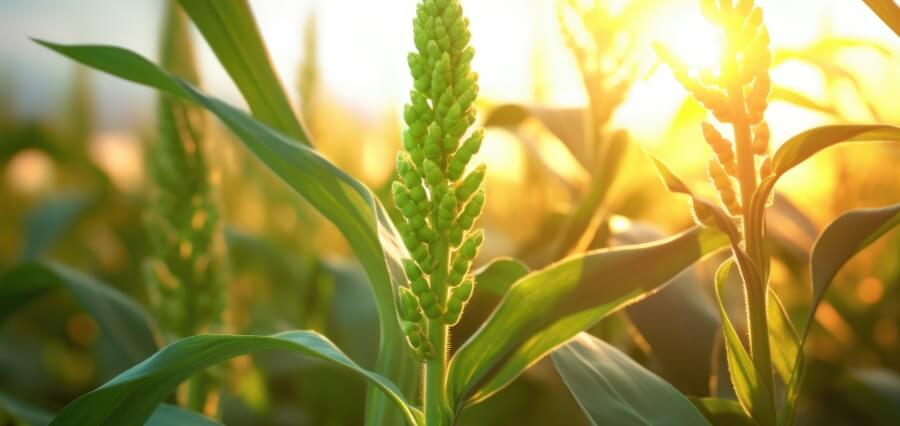CRISPR in Agriculture
In recent years, the revolutionary CRISPR technology has transcended the confines of laboratories, venturing into the expansive fields of agriculture. This article explores the realm of CRISPR in agriculture, unraveling the transformative journey of this genetic editing tool as it reshapes the landscape of sustainable and resilient crop production.
Understanding CRISPR
To comprehend the impact of CRISPR in agriculture, a fundamental understanding of the technology itself is indispensable. At its core, the CRISPR/Cas9 system operates as a precision tool for genetic modification. It’s akin to wielding microscopic scissors and a molecular GPS. This groundbreaking technology enables scientists to edit DNA with unparalleled accuracy, creating ripples of innovation across various scientific disciplines.
CRISPR emerges as a facilitator of targeted enhancements in crop characteristics in agriculture. CRISPR is a transformative force, from bolstering disease resistance to increasing yield. At the molecular level, the technology employs guide RNA to pinpoint specific genes, while Cas9, an enzyme, acts as molecular scissors, delicately editing the DNA. This targeted approach sets CRISPR apart, positioning it as a revolutionary force in reshaping the genetic landscape of agriculture.
CRISPR Applications in Agriculture
The applications of CRISPR in agriculture are nothing short of revolutionary. This genetic editing tool empowers farmers and scientists, offering avenues to enhance crop resilience, bolster disease resistance, and optimize yields. Through precise genetic modifications, CRISPR facilitates the development of crops with heightened tolerance to environmental stressors, paving the way for sustainable farming practices in unpredictable climates.
Beyond its role as a catalyst for disease resistance, CRISPR accelerates traditional breeding processes. It provides a faster and more efficient means to cultivate desired traits, ushering in a new era of agricultural efficiency. As a transformative force, CRISPR addresses current challenges and promises a future where crops are customized to thrive in diverse conditions, making substantial contributions to global food security and sustainable farming practices.
CRISPR Regulations and Ethical Considerations
The journey of CRISPR in agriculture is not without its regulatory and ethical considerations. Presently, regulatory frameworks are diligently crafted to oversee and manage the deployment of CRISPR-modified crops, ensuring safety and adherence to ethical standards. The concerns surrounding unintended consequences and potential impacts on ecosystems necessitate stringent oversight.
Ethical considerations in CRISPR involve transparent communication with the public about genetic modifications, respecting biodiversity, and addressing any long-term implications. Striking a delicate balance between fostering innovation and safeguarding ethical principles is paramount for accepting and sustaining the integration of CRISPR in agriculture.
Future Prospects
Looking ahead, the prospects of CRISPR in agriculture are undeniably promising. This technology is key to groundbreaking innovations and expanded applications that could further enhance disease resistance, increase yields, and introduce novel traits catering to specific agricultural challenges. CRISPR is poised to unlock new avenues for sustainable and resilient crop production as technology evolves.
Researchers and agricultural experts anticipate advancements that could redefine the very fabric of farming. CRISPR is positioned as a transformative force with far-reaching implications, from addressing environmental stressors to combating climate change. The ongoing exploration of its potential suggests a future where global farming practices are efficient, environmentally conscious, and resilient.
Challenges and Limitations
Despite the promises embedded in CRISPR, it is not immune to challenges. Unintended consequences and associated risks must be addressed comprehensively. Public concerns about the ethical use of this powerful technology add another layer of complexity. As we navigate this uncharted territory, a careful and measured approach is essential to ensure the responsible and ethical use of CRISPR in agriculture.
CRISPR vs. Traditional Breeding Methods
Comparing CRISPR with traditional breeding methods provides a nuanced perspective on its advantages and disadvantages. Understanding these differences is crucial for informed decision-making in agriculture. While traditional breeding has its merits, CRISPR’s precision and efficiency offer a compelling argument for its integration into modern farming practices.
Integrating CRISPR into Sustainable Farming Practices
This section advocates for the seamless integration of CRISPR into sustainable farming practices. The goal is to promote eco-friendly agriculture while balancing the benefits of technology with its environmental impact. Striking this equilibrium is essential for ensuring that the adoption of CRISPR aligns with broader sustainability goals, contributing to the long-term health of our planet.
Farmer Adoption and Education
Encouraging farmers to adopt CRISPR technology necessitates education and awareness. Bridging the gap between scientific advancements and on-field application is essential for widespread adoption. Educational programs tailored to farmers’ needs are crucial, ensuring they grasp the benefits and applications of CRISPR in a practical and accessible manner.
CRISPR’s Role in Global Food Security
CRISPR emerges as a key player in addressing global food security challenges. By contributing to the alleviation of food shortages and building resilience against climate change, CRISPR offers hope for a sustainable future. Its applications extend beyond individual farms, creating a ripple effect that could positively impact communities and nations grappling with food security concerns.
Public Perception and Outreach
Effectively communicating the benefits of CRISPR to the public is a crucial component of its successful integration. This section explores strategies for bridging the gap between scientists and the community, fostering understanding and acceptance. Public perception plays a pivotal role in shaping the trajectory of CRISPR in agriculture, making transparent communication and outreach imperative.
The Future Landscape of CRISPR-Altered Agriculture
Predicting the future of CRISPR in agriculture involves considering potential breakthroughs and challenges. This section offers insights into the evolving landscape of CRISPR-altered agriculture. As this technology continues to mature, the possibilities are vast, and its integration into mainstream farming practices could redefine how we perceive and practice agriculture globally.
Conclusion
In conclusion, this article serves as a journey through the impact of CRISPR in agriculture, emphasizing its pivotal role in fostering sustainability and resilience. As we gaze into the future, CRISPR stands as a driving force in shaping the trajectory of global agriculture. Its applications go beyond mere genetic editing; they offer a glimpse into a future where crops are tailored to thrive in dynamic environmental conditions, contributing to a more sustainable and secure food supply.





